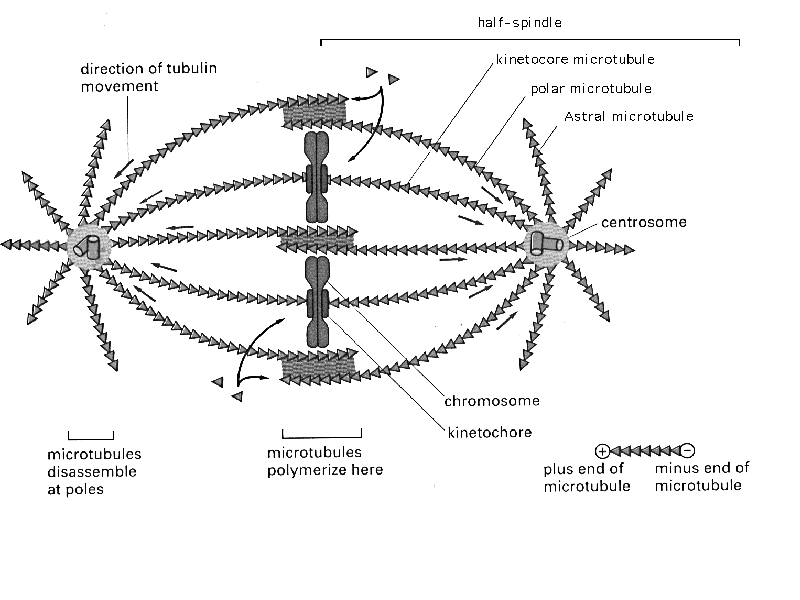
| MadSci Network: Cell Biology |
We will review the mitosis prosses to undertand how the chromosomes move in opposite directions:
1. Prophase: Toward the end of the prophase the cytoplasmic microtubules that are part of the interphase cytoskeleton disassemble and the mitotic spindle begins to form.
2. Prometaphase: When the nuclear envelope breaks, the spindle microtubules, can now enter the nuclear region. In the middle of each chromosome a protein complex called kinetochore attaches to some of the spindle microtubules, wich are called kinetochore microtubules. The remaining microtubules in the spindle are called polar microtubules, while those outside the spindle are called astral microtubules. (see the figure). The kinetocore microtubules exert tension on the chromosomes, which are thereby thrown into agitated motion.
3.Metaphase: The kinetocore microtubules eventually align halfway between the spindle poles.
4. Anaphase: each chromatid now called a chromosome, is pulled toward the pole it faces. Two categories of movement can be distinguished: Anaphase A: kinetocore microtubules shorten as the chromosomes approach the poles. Anaphase B: polar microtubules elongate and the two poles of the spindle move father apart.
5. Telophase: The daughter chromosomes arive at the poles and kinetocore microtubules disappear. The polar microtubuleslongate still more and a new nuclear envelop reforms.
You can see that the microtubules are responsable for all this movement. Microtubules are rope-like structures formed by subunits of tubulin. Tubulin is added to the kinetocore microtubules to elongate them, during metaphase, and to polar microtubules, during anaphase B. While tubulin is substracted, desassembling microtubules, near the kinetocore, shortening the kinetocore microtubules during anaphase A.
TRY TO IMAGINE THE PROCESS!!!!!!
Reference: Molecular Biology of the cell from Bruce Alberts , et al .
Third Edition. Garland Publishing, Inc. 919-934

Try the links in the MadSci Library for more information on Cell Biology.